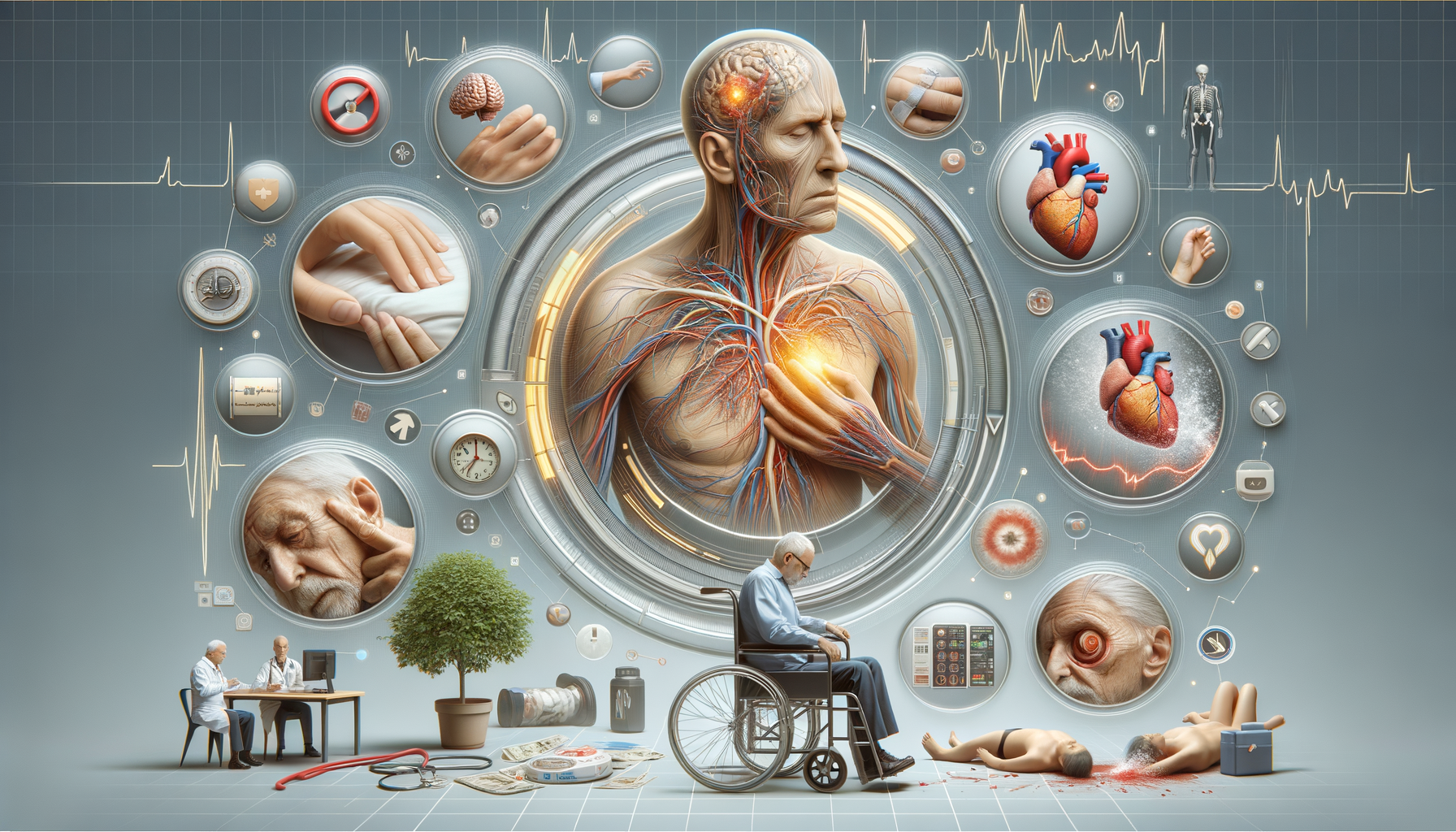
Stroke Symptoms: Recognizing the Signs and Taking Action
Introduction to Stroke Symptoms
Strokes are a leading cause of death and disability worldwide, making it crucial to understand their symptoms and underlying causes. Recognizing the warning signs early can significantly improve outcomes for those affected. This article explores the various symptoms of strokes, the importance of timely intervention, and offers insights into preventive measures. By understanding these critical aspects, individuals can be better prepared to act quickly and effectively in the event of a stroke.
Common Symptoms of a Stroke
Stroke symptoms can vary widely but often include sudden numbness or weakness, particularly on one side of the body. This can manifest as a drooping face, arm weakness, or difficulty speaking. Other symptoms may involve sudden confusion, trouble seeing in one or both eyes, difficulty walking, dizziness, or a severe headache with no known cause. Recognizing these symptoms promptly and seeking immediate medical attention is vital, as early treatment can significantly reduce the risk of long-term damage.
- Sudden numbness or weakness in the face, arm, or leg, especially on one side of the body.
- Confusion or difficulty understanding speech.
- Trouble seeing in one or both eyes.
- Difficulty walking, dizziness, or loss of balance and coordination.
- Severe headache with no known cause.
These symptoms may occur individually or in combination, and their sudden onset is a critical indicator that a stroke may be occurring. Immediate medical evaluation is essential to determine the appropriate course of action.
Understanding the Causes of Stroke
Strokes occur when the blood supply to part of the brain is interrupted or reduced, preventing brain tissue from getting oxygen and nutrients. This can happen due to a blocked artery (ischemic stroke) or the bursting of a blood vessel (hemorrhagic stroke). Ischemic strokes are the most common, often caused by blood clots or fatty deposits in the arteries. Hemorrhagic strokes can result from conditions such as high blood pressure, aneurysms, or trauma.
Several risk factors can increase the likelihood of experiencing a stroke, including:
- High blood pressure
- Smoking
- Diabetes
- High cholesterol
- Obesity and physical inactivity
- Excessive alcohol consumption
- Family history of stroke
Understanding these risk factors is essential for prevention. Lifestyle changes, such as adopting a healthy diet, exercising regularly, and managing medical conditions, can significantly reduce the risk of stroke.
The Importance of Timely Intervention
The phrase “time is brain” aptly describes the urgency of treating strokes. The faster a stroke is diagnosed and treated, the better the chances of minimizing brain damage and improving recovery outcomes. Treatments for ischemic stroke may include clot-busting medications or mechanical thrombectomy to remove the blockage. Hemorrhagic strokes may require surgical intervention to repair the blood vessel or relieve pressure on the brain.
Emergency medical services should be contacted immediately if stroke symptoms are suspected. Quick action can mean the difference between a full recovery and long-term disability. Public awareness campaigns emphasize the importance of recognizing stroke symptoms and acting swiftly, underscoring the critical nature of early intervention.
Preventive Measures for Reducing Stroke Risk
Prevention is a vital component in reducing the incidence of strokes. By addressing modifiable risk factors, individuals can significantly lower their chances of experiencing a stroke. Key preventive measures include:
- Maintaining a healthy diet low in saturated fats, cholesterol, and sodium.
- Engaging in regular physical activity to maintain a healthy weight.
- Monitoring and managing blood pressure, cholesterol, and diabetes.
- Avoiding smoking and limiting alcohol consumption.
- Regular health check-ups to monitor risk factors.
Education and awareness are crucial in encouraging lifestyle changes that support cardiovascular health. Community programs and healthcare providers play a significant role in disseminating information and resources to help individuals make informed decisions about their health.
Conclusion: Taking Action Against Stroke
Understanding stroke symptoms and the importance of rapid response can save lives. By recognizing the signs, understanding the causes, and implementing preventive measures, individuals can take proactive steps to protect themselves and their loved ones. Education and awareness are powerful tools in the fight against stroke, empowering individuals to make informed choices that promote health and well-being. As medical advancements continue to improve treatment options, early detection and prevention remain key components in reducing the impact of strokes on individuals and communities.


